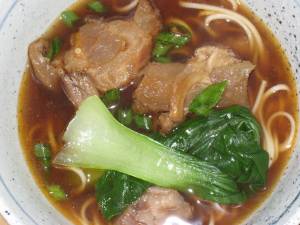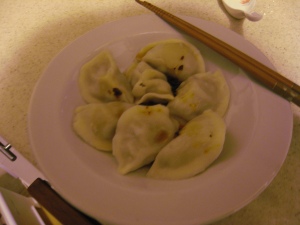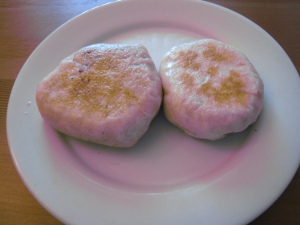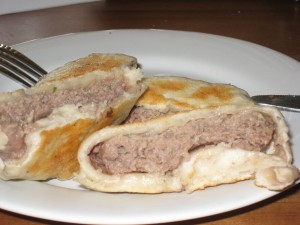I love soups, but I have never been a fan of miso soup.
Especially the way they make them in your typical American Japanese restaurants — the soup just tastes “dead” to me — the saltiness of the miso is the only thing that comes through. Bleh. The beauty of soups is their layers, their whole-heartedness, or on the other end of the spectrum, the soothing beauty of its clarity — your typical restaurant miso soup sat on neither ends.
But I always knew that miso soup could shine — I love the home-style, hearty miso soup they serve at Katsu Hama in New York City — filled with julienned cabbage, carrots and onions. The sweetness of the vegetables flavor the miso soup and add another dimension of flavor (and not to mention texture). I also, absolutely adore, the clam-based miso soup Thomas serves at Taki Sushi.
About two weeks ago I made a successful pot of miso soup at home — and have been craving miso ever since. The key, really, I have found (finally confirmed what all the other food blogs and chinese mom-cooks have told me), is to mix the miso into a paste before adding them to the soup, and NEVER boil the miso to maintain its fermented, sweet flavor. I forgot to take pictures, but here’s your basic vegetable miso soup recipe:
Home-style vegetable-based miso soup
Ingredients
- shiro miso paste /white miso paste (obviously, you can use red)
- 1 onion, julienned
- 1-2 carrots, julienned
- 1-2 daikon, julienned (feel free to substitute and change the vegs)
- touch of soy sauce
- salt
- cilantro
- water or stock
- sweat your vegetables in a med size sauce pan.
- add in water (or stock if you want), bring to a boil them simmer until veg are tender.
- in a small bowl, add in a table spoon of the simmering liquid from the pan, mix in miso and soy sauce to form a paste
- dump the miso-soy paste into the soup, stir and remove from heat.
- add salt, cilantro for garnish.
More miso recipes to come — I am sure….already thinking miso marinated fish, miso pork, miso steamed tofu….miso sweet parsnip puree (yeah fall)?




